Abstract
Of 88 consecutive patients aged 20 to 77 years with severe symptomatic aortic valve disease requiring surgery, 51 patients had angina pectoris; of these 51, 41 had predominant aortic stenosis and 10 had severe aortic regurgitation. All patients with angina pectoris underwent coronary angiography; significant coronary arterial disease was encounted in 24 per cent of those with aortic stenosis and 20 per cent of those with aortic regurgitation. By contrast, of 37 patients without angina pectoris 19 underwent coronary arteriography; none showed significant coronary artery disease (P smaller than 0.05). Among patients with angina pectoris, 17 per cent of those with aortic stenosis experienced prolonged, rest or nocturnal pain, compared to 70 per cent of those with aortic regurgitation (P smaller than 0.005). At the time of onset of angina pectoris, there were features of heart failure in 34 per cent of those with aortic stenosis, and in 90 per cent of those with aortic regurgitation (P smaller than 0.005). Nitroglycerin promptly relieved angina pectoris in 56 percent of patients with aortic stenosis and in 50 per cent of those with aortic regurgitation (P smaller than 0.05). Neither the pattern of angina pectoris nor the response to nitroglycerin was dependent upon the coexistence of significant coronary artery disease. In patients with aortic stenosis, there was not significant difference between those with angina pectoris, and those without angina with regard to left ventricular end-diastolic volume, end-diastolic pressure, ejection fraction, peak systolic pressure, wall thickness, cardiac index, or the product of these factors. In patients with aortic regurgitation, cardiac index was significantly lower (P smaller than 0.05), left ventricular end-diastolic volume tended to be larger, and ejection fraction tended to be lower in patients with angina pectoris as opposed to those without angina pectoris.
Full text
PDF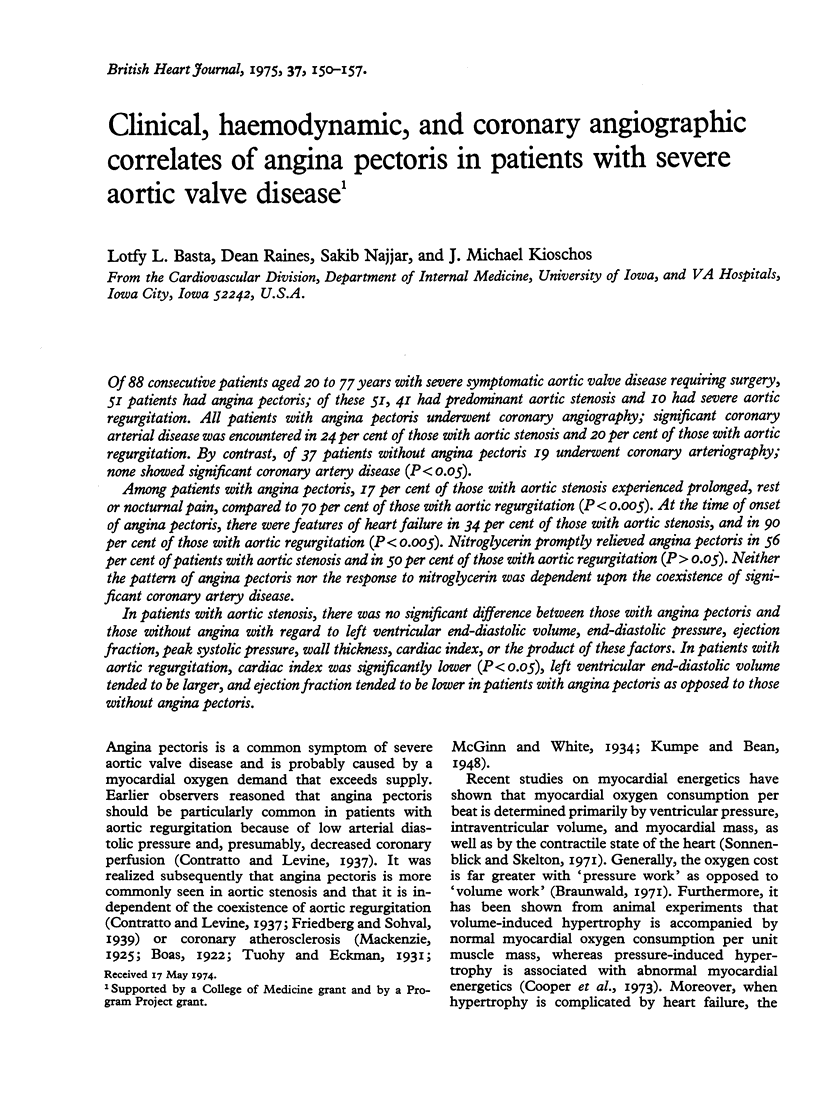
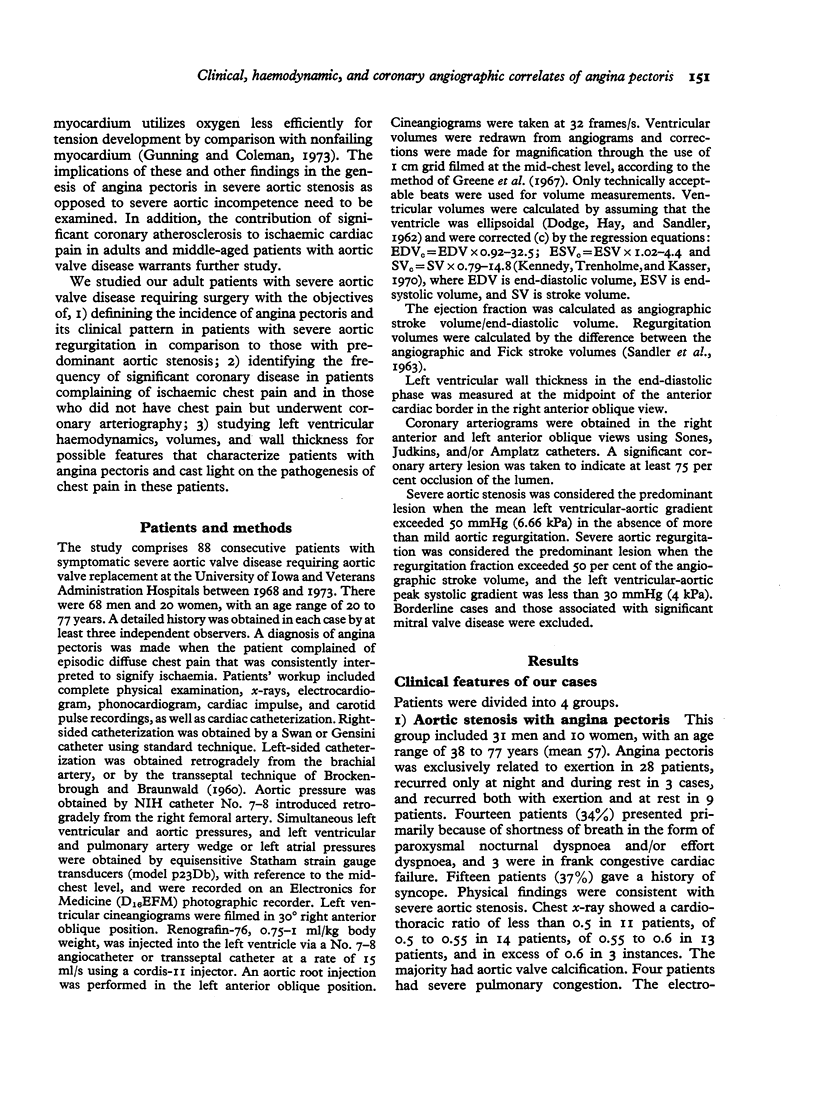
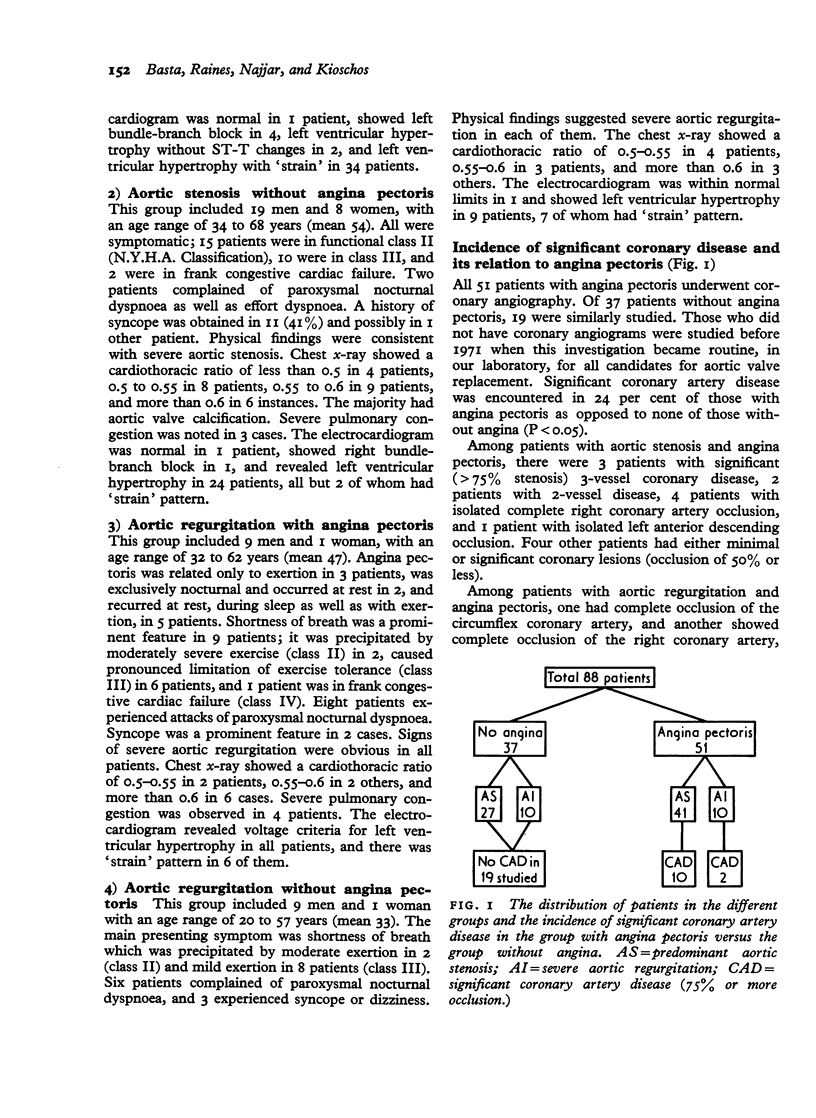
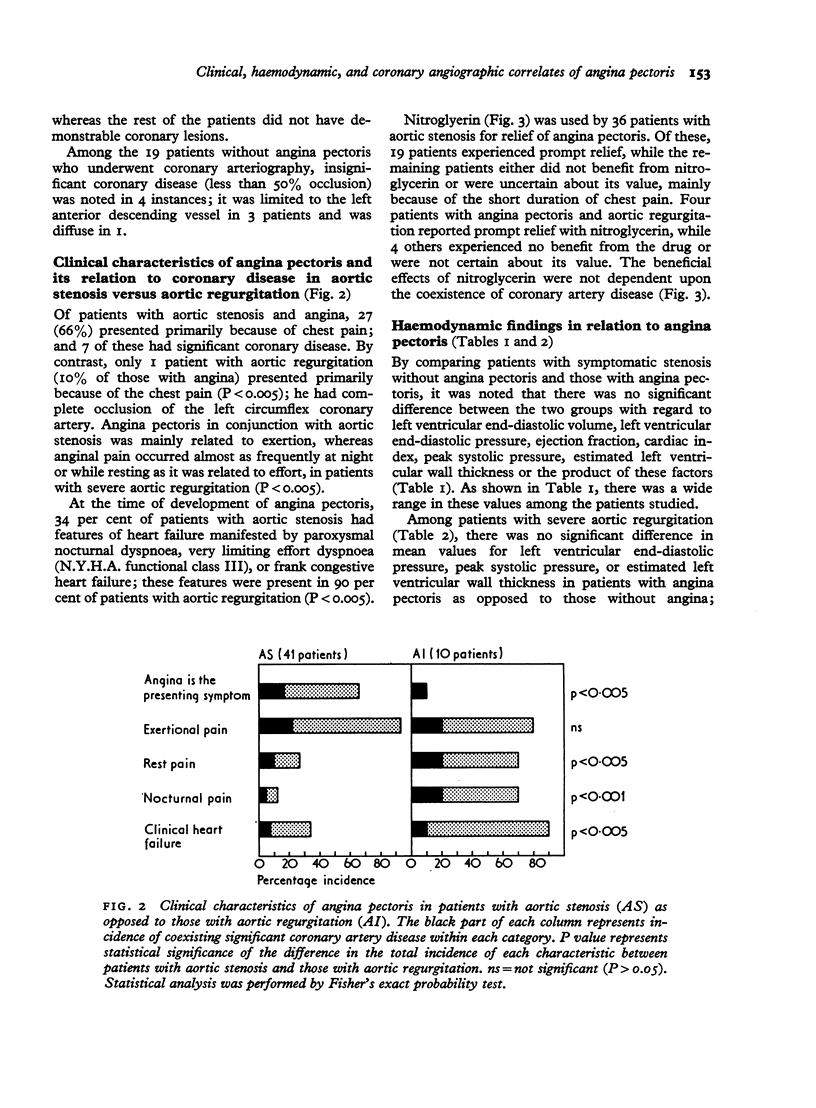
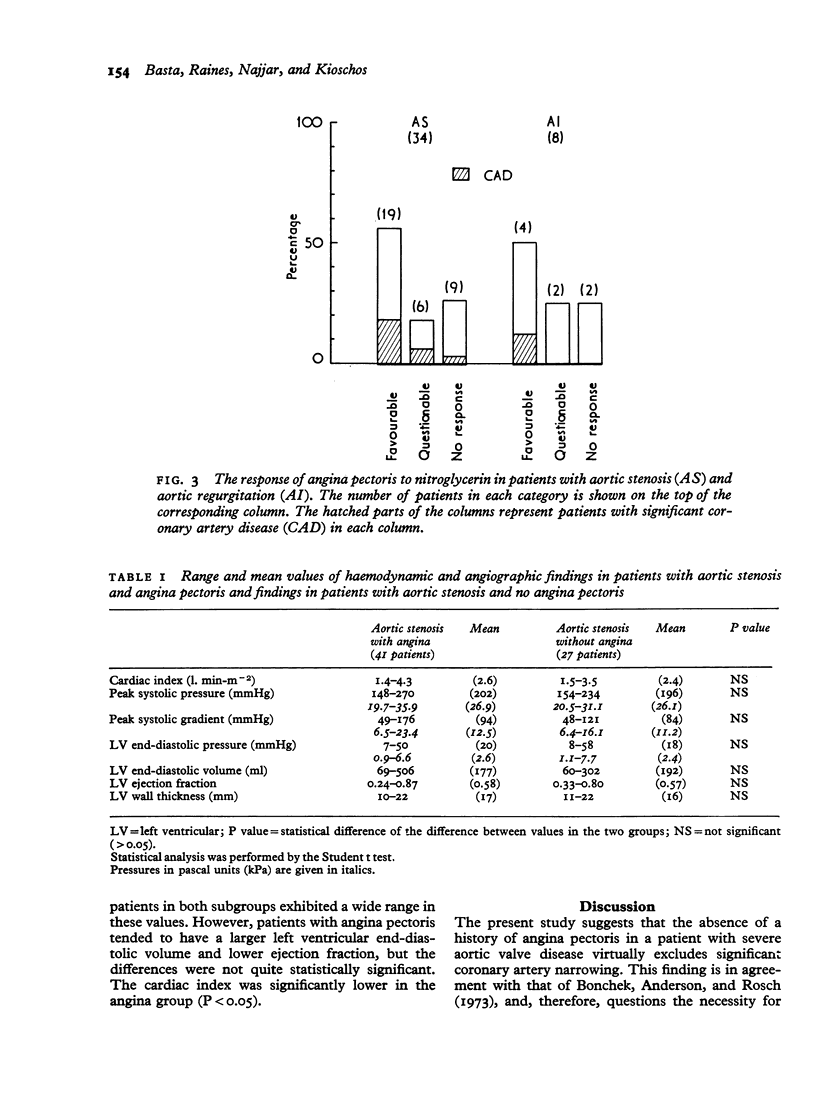
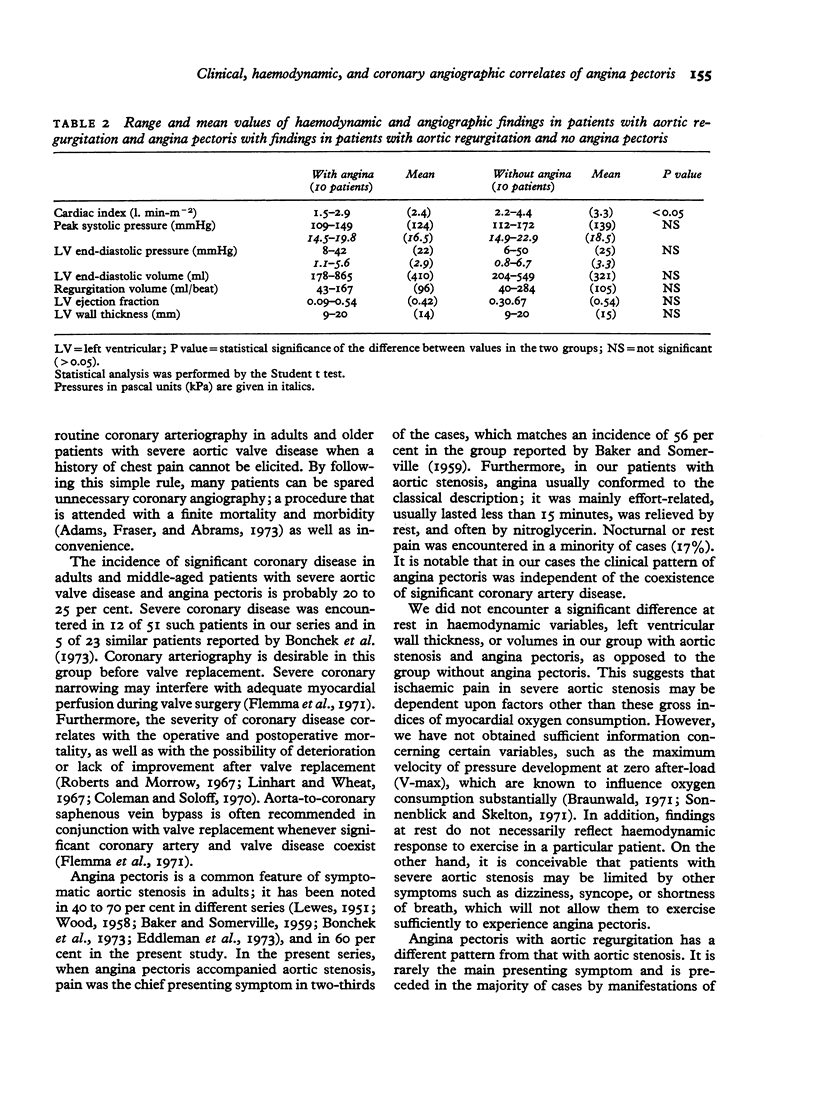
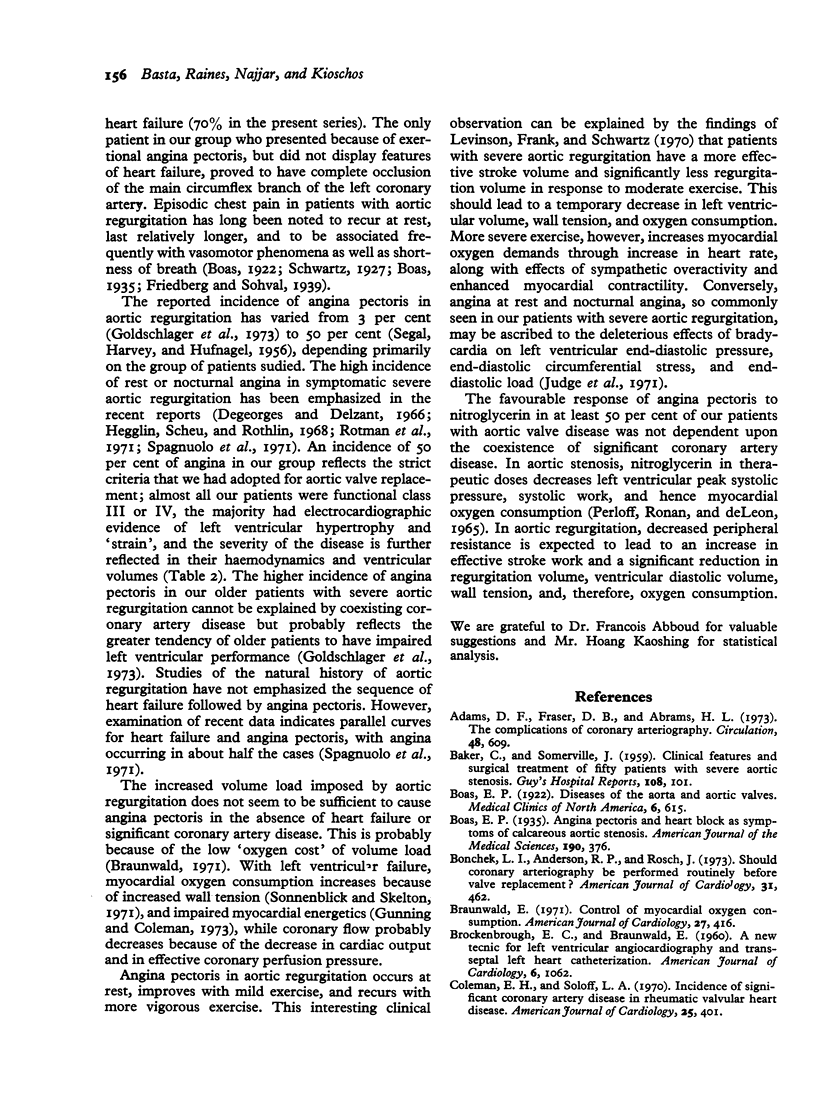
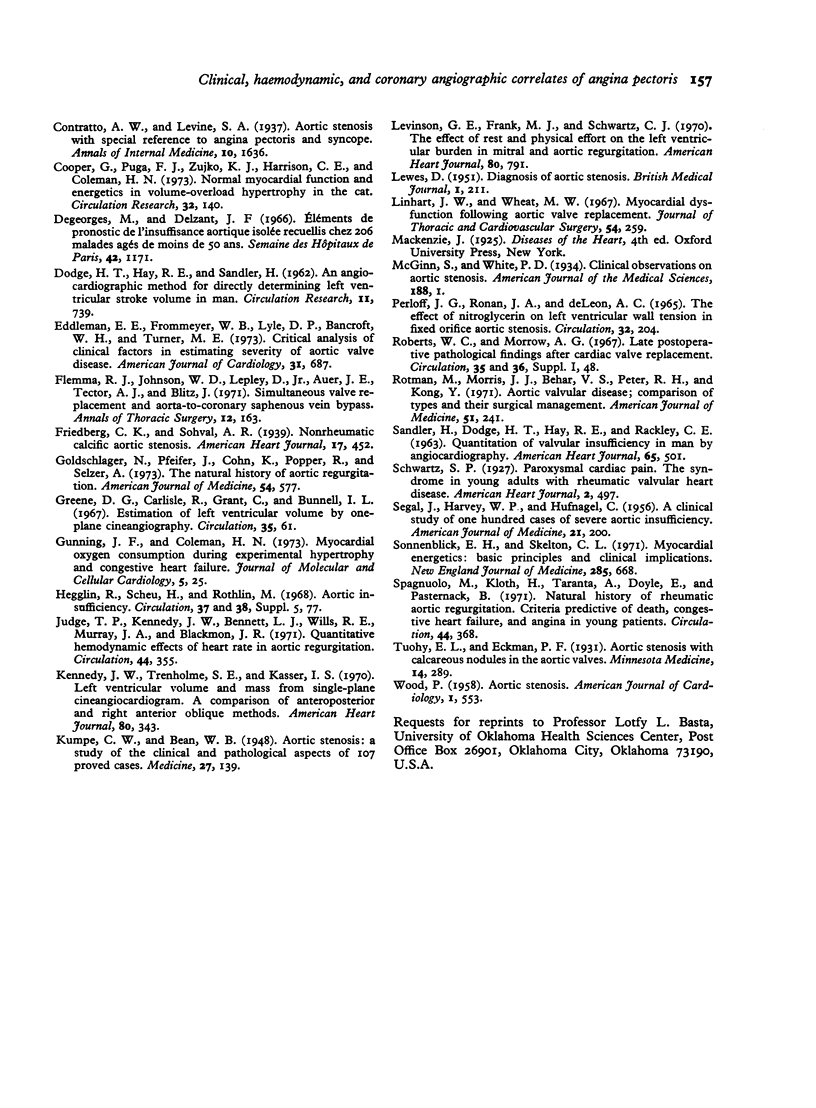
Selected References
These references are in PubMed. This may not be the complete list of references from this article.
- Adams D. F., Fraser D. B., Abrams H. L. The complications of coronary arteriography. Circulation. 1973 Sep;48(3):609–618. doi: 10.1161/01.cir.48.3.609. [DOI] [PubMed] [Google Scholar]
- Bonchek L. I., Anderson R. P., Rösch J. Should coronary arteriography be performed routinely before valve replacement? Am J Cardiol. 1973 Apr;31(4):462–466. doi: 10.1016/0002-9149(73)90295-6. [DOI] [PubMed] [Google Scholar]
- Braunwald E. Control of myocardial oxygen consumption: physiologic and clinical considerations. Am J Cardiol. 1971 Apr;27(4):416–432. doi: 10.1016/0002-9149(71)90439-5. [DOI] [PubMed] [Google Scholar]
- Coleman E. H., Soloff L. A. Incidence of significant coronary artery disease in rheumatic valvular heart disease. Am J Cardiol. 1970 Apr;25(4):401–404. doi: 10.1016/0002-9149(70)90004-4. [DOI] [PubMed] [Google Scholar]
- Cooper G., 4th, Puga F. J., Zujko K. J., Harrison C. E., Coleman H. N., 3rd Normal myocardial function and energetics in volume-overload hypertrophy in the cat. Circ Res. 1973 Feb;32(2):140–148. doi: 10.1161/01.res.32.2.140. [DOI] [PubMed] [Google Scholar]
- DODGE H. T., HAY R. E., SANDLER H. An angiocardiographic method for directly determining left ventricular stroke volume in man. Circ Res. 1962 Oct;11:739–745. doi: 10.1161/01.res.11.4.739. [DOI] [PubMed] [Google Scholar]
- Eddleman E. E., Jr, Frommeyer W. B., Jr, Lyle D. P., Turner M. E., Jr, Bancroft W. H., Jr Critical analysis of clinical factors in estimating severity of aortic valve disease. Am J Cardiol. 1973 Jun;31(6):687–695. doi: 10.1016/0002-9149(73)90001-5. [DOI] [PubMed] [Google Scholar]
- Flemma R. J., Johnson W. D., Lepley D., Jr, Auer J. E., Tector A. J., Blitz J. Simultaneous valve replacement and aorta-to-coronary saphenous vein bypass. Ann Thorac Surg. 1971 Aug;12(2):163–170. doi: 10.1016/s0003-4975(10)65109-0. [DOI] [PubMed] [Google Scholar]
- Goldschlager N., Pfeifer J., Cohn K., Popper R., Selzer A. The natural history of aortic regurgitation. A clinical and hemodynamic study. Am J Med. 1973 May;54(5):577–588. doi: 10.1016/0002-9343(73)90115-0. [DOI] [PubMed] [Google Scholar]
- Gunning J. F., Coleman H. N., 3rd Myocardial oxygen consumption during experimental hypertrophy and congestive heart failure. J Mol Cell Cardiol. 1973 Feb;5(1):25–38. doi: 10.1016/0022-2828(73)90033-3. [DOI] [PubMed] [Google Scholar]
- Judge T. P., Kennedy J. W., Bennett L. J., Wills R. E., Murray J. A., Blackmon J. R. Quantitative hemodynamic effects of heart rate in aortic regurgitation. Circulation. 1971 Sep;44(3):355–367. doi: 10.1161/01.cir.44.3.355. [DOI] [PubMed] [Google Scholar]
- Kennedy J. W., Trenholme S. E., Kasser I. S. Left ventricular volume and mass from single-plane cineangiocardiogram. A comparison of anteroposterior and right anterior oblique methods. Am Heart J. 1970 Sep;80(3):343–352. doi: 10.1016/0002-8703(70)90099-2. [DOI] [PubMed] [Google Scholar]
- Levinson G. E., Frank M. J., Schwartz C. J. The effect of rest and physical effort on the left ventricular burden in mitral and aortic regurgitation. Am Heart J. 1970 Dec;80(6):791–801. doi: 10.1016/0002-8703(70)90141-9. [DOI] [PubMed] [Google Scholar]
- Rotman M., Morris J. J., Jr, Behar V. S., Peter R. H., Kong Y. Aortic valvular disease. Comparison of types and their medical and surgical management. Am J Med. 1971 Aug;51(2):241–257. doi: 10.1016/0002-9343(71)90242-7. [DOI] [PubMed] [Google Scholar]
- SANDLER H., DODGE H. T., HAY R. E., RACKLEY C. E. Quantitation of valvular insufficiency in man by angiocardiography. Am Heart J. 1963 Apr;65:501–513. doi: 10.1016/0002-8703(63)90100-5. [DOI] [PubMed] [Google Scholar]
- SEGAL J., HARVEY W. P., HUFNAGEL C. A clinical study of one hundred cases of severe aortic insufficiency. Am J Med. 1956 Aug;21(2):200–210. doi: 10.1016/0002-9343(56)90053-5. [DOI] [PubMed] [Google Scholar]
- Sonnenblick E. H., Skelton C. L. Myocardial energetics: basic principles and clinical implications. N Engl J Med. 1971 Sep 16;285(12):668–675. doi: 10.1056/NEJM197109162851208. [DOI] [PubMed] [Google Scholar]
- Spagnuolo M., Kloth H., Taranta A., Doyle E., Pasternack B. Natural history of rheumatic aortic regurgitation. Criteria predictive of death, congestive heart failure, and angina in young patients. Circulation. 1971 Sep;44(3):368–380. doi: 10.1161/01.cir.44.3.368. [DOI] [PubMed] [Google Scholar]
- WOOD P. Aortic stenosis. Am J Cardiol. 1958 May;1(5):553–571. doi: 10.1016/0002-9149(58)90138-3. [DOI] [PubMed] [Google Scholar]


